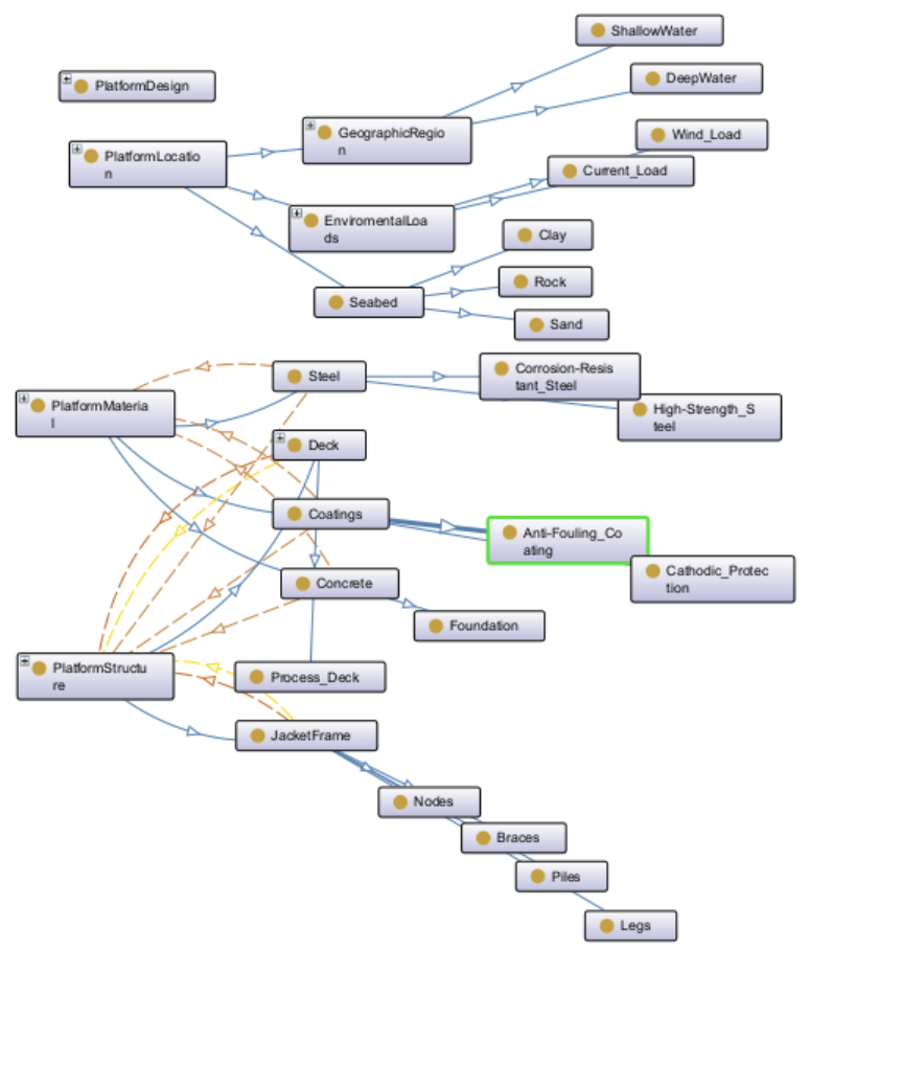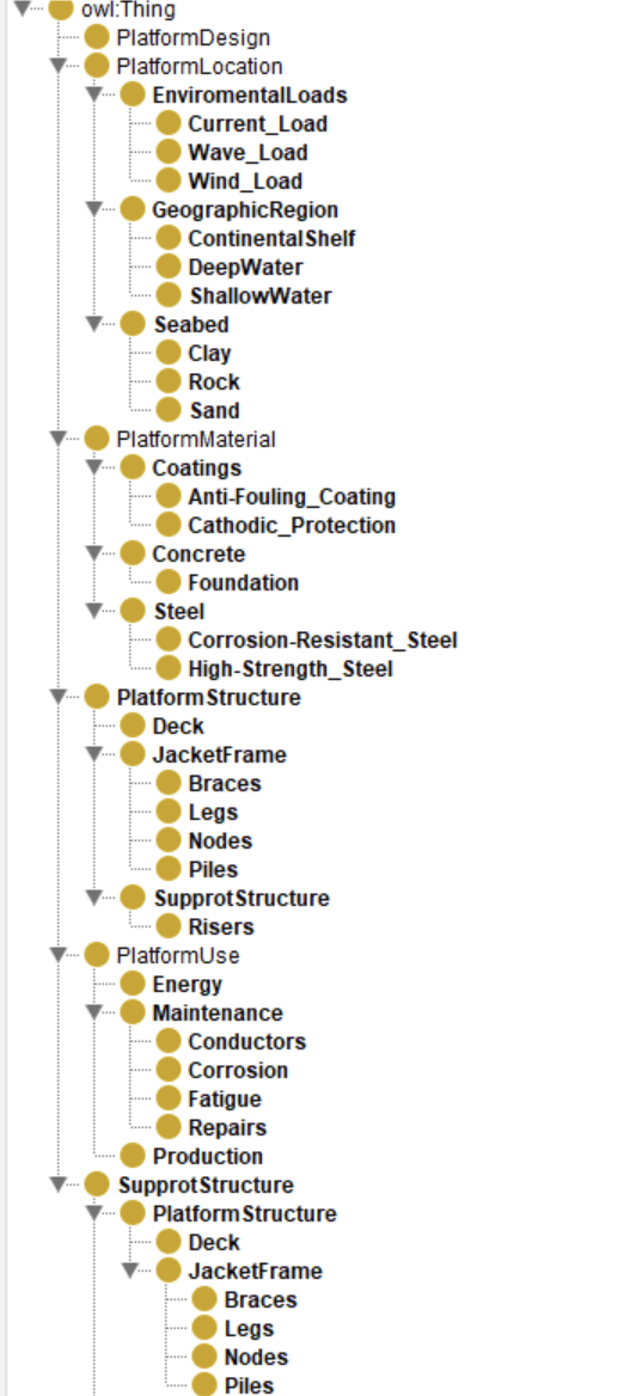Ontology for Offshore Wind Turbine Platforms
Offshore wind turbine platforms are essential structures that support wind energy generation in marine environments. These platforms are designed to withstand harsh environmental conditions, including wind, waves, and seabed variations, while providing a stable foundation for wind turbines.
This ontology represents the structural components, materials, environmental conditions, and functional relationships that define offshore wind turbine platforms. The goal is to support the preliminary structural design, material selection, and performance analysis of these platforms by organizing key concepts in a structured manner.
The ontology is useful for structural engineers and offshore wind energy specialists, helping them understand the interactions between different components and aiding in the optimization of platform design.
Features & Relationships
- PlatformLocation influences Foundation Selection (Seabed type affects platform stability).
- Environmental Loads impact Structural Components (Wind and current loads define design constraints).
- Materials are assigned based on Structural Requirements (Corrosion-resistant steel for marine conditions).
- Jacket Frame Elements connect Braces, Nodes, and Piles to form a rigid structure.
- Coatings and Protection Measures extend the service life of offshore structures.

Engineering Examples
Here are three engineering examples with specific scenarios and use cases for offshore wind turbine platforms:
1. Optimization of a Jacket Platform for Deep Water Deployment
Scenario: A wind farm is being developed in deep waters where monopiles are not viable. The platform must withstand strong currents and high wind loads while minimizing material costs.
Use Case: The ontology provides insights into structural components, material selection, and load distribution. Engineers can test different jacket frame configurations (3-leg vs. 4-leg) and material compositions to balance stability, durability, and cost. These insights help in developing a parametric model for performance evaluation.
2. Upgrading an Offshore Wind Farm for Increased Energy Demand
Scenario: A wind farm initially designed for moderate power generation needs to be upgraded to meet rising energy demands. More turbines must be added while maintaining structural integrity.
Use Case: The ontology defines the relations between monopiles, jacket structures, and environmental conditions. Engineers can use it to assess the feasibility of adding larger turbines, adjusting monopile diameters, or reinforcing jacket structures. A parametric model can simulate load redistribution and structural adaptations.
3. Adapting a Pipeline Network for Changing Water Treatment Needs
Scenario: Seasonal variations in water availability require an adaptive pipeline system that efficiently manages seawater intake and rainwater storage for treatment.
Use Case: The ontology enables engineers to define adjustable pipeline diameters based on demand. By integrating flow rate (Q), storage volume, and treatment capacity, engineers can model an optimized pipeline system that dynamically adjusts to varying conditions, improving efficiency and sustainability.
